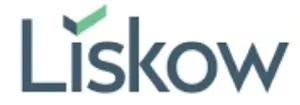- within Strategy topic(s)
- with readers working within the Environment & Waste Management industries
On May 18, 2023, the U.S. Equal Employment Opportunity Commission (EEOC) released a technical assistance document explaining the interplay of various established aspects of Title VII of the Civil Rights Act ("Title VII") and an employer's use of artificial intelligence and other automated systems. This technical assistance is released as a follow-up to the EEOC's 2021 launch of an agency-wide initiative geared toward ensuring that the use of artificial intelligence (AI), machine learning, and other emerging technologies used in hiring and other employment decisions comply with federal civil rights laws. It is the second guidance document the agency has issued in this area, coming almost exactly one year after the agency issued its first guidance regarding employers' use of AI, which outlined best practices and key considerations to help ensure that software utilized by employers does not disadvantage applicants or employees with disabilities in violation of the Americans with Disabilities Act ("ADA").
Employers are increasingly using AI to assist with recruitment, hiring, promotion, retention, performance monitoring, demotion, and dismissal in an effort to not only save time and money but to also minimize the chances of bias impairing the decision-making process. For example, employers may utilize a resume scanner to select applications that include certain keywords. The EEOC's guidance – which focuses only on hiring, promotion and firing – explains that this is not a "set it and forget it" technology. Employers should routinely monitor these algorithmic tools to ensure they are not having an adverse or disparate impact under Title VII.
In addition to defining key terms regarding automated systems and AI, the document incorporates a Question and Answer section. The EEOC makes clear that the use of AI to make decisions about hiring, promotion, termination, or similar actions is a "selection procedure." It also explains that employers can assess whether a selection procedure has an adverse impact on a protected group by determining whether use of the procedure causes a selection rate – the proportion of applicants or candidates who are hired, promoted, or otherwise selected – for individuals in the group that is "substantially" less than the selection rate for individuals in another group.
Importantly, the EEOC clarifies that outsourcing the design or administration of algorithmic decision-making tools to a third party does not insulate an employer from being held responsible for a violation of Title VII. This underscores the importance of properly vetting software vendors to determine whether various tools have resulted in substantially lower selection rates for individuals with a characteristic protected by Title VII. If they have, employers must consider whether the use of the tool is nevertheless job related and consistent with business necessity, as well as whether any alternatives that have less of a disparate impact may exist to meet their needs.
Liskow's employment law team can assist you in reviewing your decision-making tools to ensure compliance with federal and state civil rights laws.
Disclaimer: This Blog/Web Site is made available by the law firm of Liskow & Lewis, APLC ("Liskow & Lewis") and the individual Liskow & Lewis lawyers posting to this site for educational purposes and to give you general information and a general understanding of the law only, not to provide specific legal advice as to an identified problem or issue. By using this blog site you understand and acknowledge that there is no attorney-client relationship formed between you and Liskow & Lewis and/or the individual Liskow & Lewis lawyers posting to this site by virtue of your using this site. The Blog/Web Site should not be used as a substitute for legal advice from a licensed professional attorney in your state regarding a particular matter.
Privacy Policy: By subscribing to Liskow & Lewis' E-Communications, you will receive articles and blogs with insight and analysis of legal issues that may impact your industry. Communications include firm news, insights, and events. To receive information from Liskow & Lewis, your information will be kept in a secured contact database. If at any time you would like to unsubscribe, please use the SafeUnsubscribe® link located at the bottom of every email that you receive.
The content of this article is intended to provide a general guide to the subject matter. Specialist advice should be sought about your specific circumstances.




